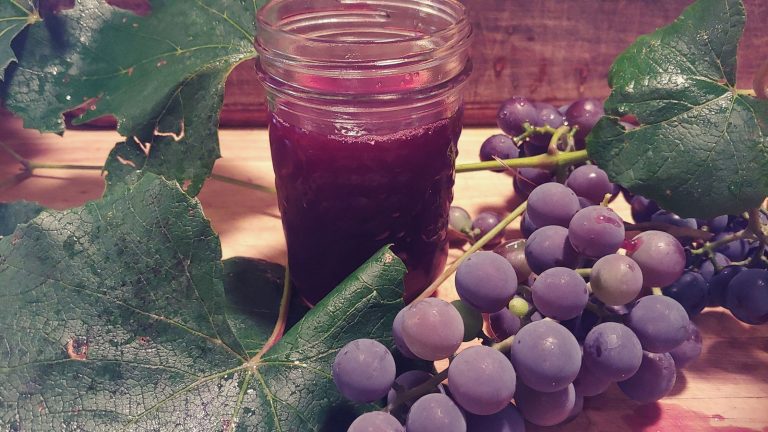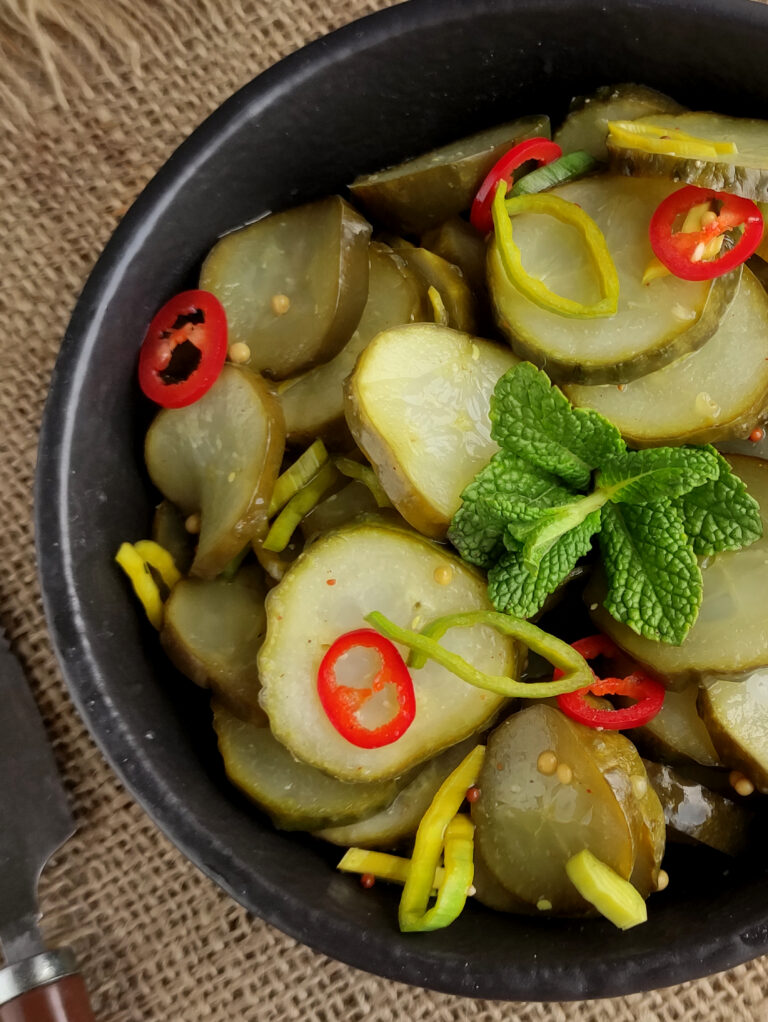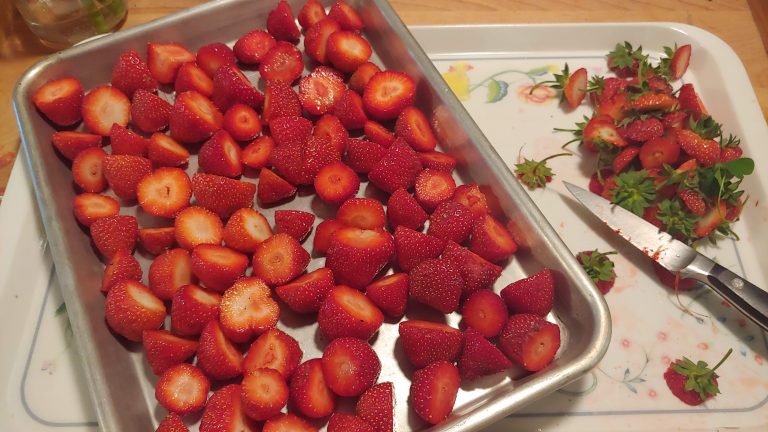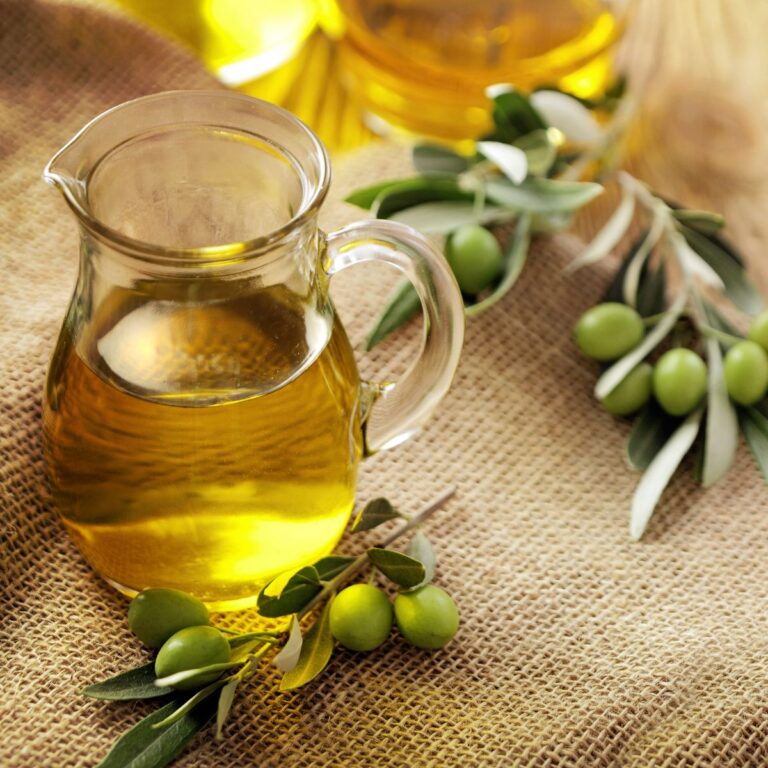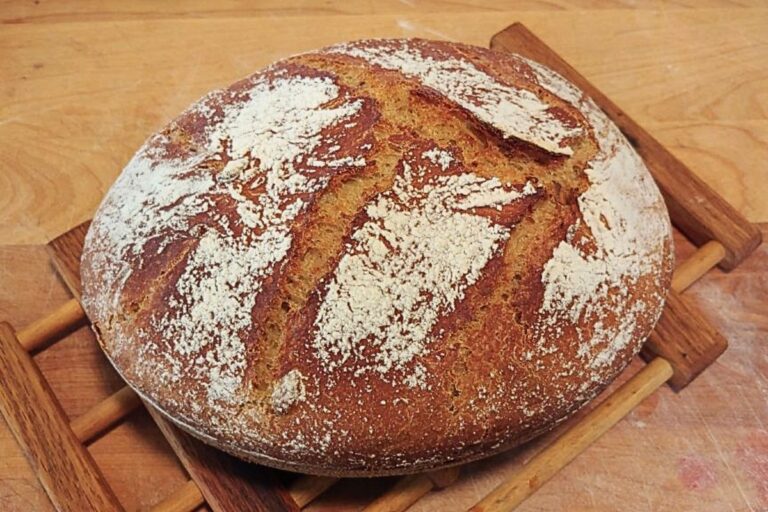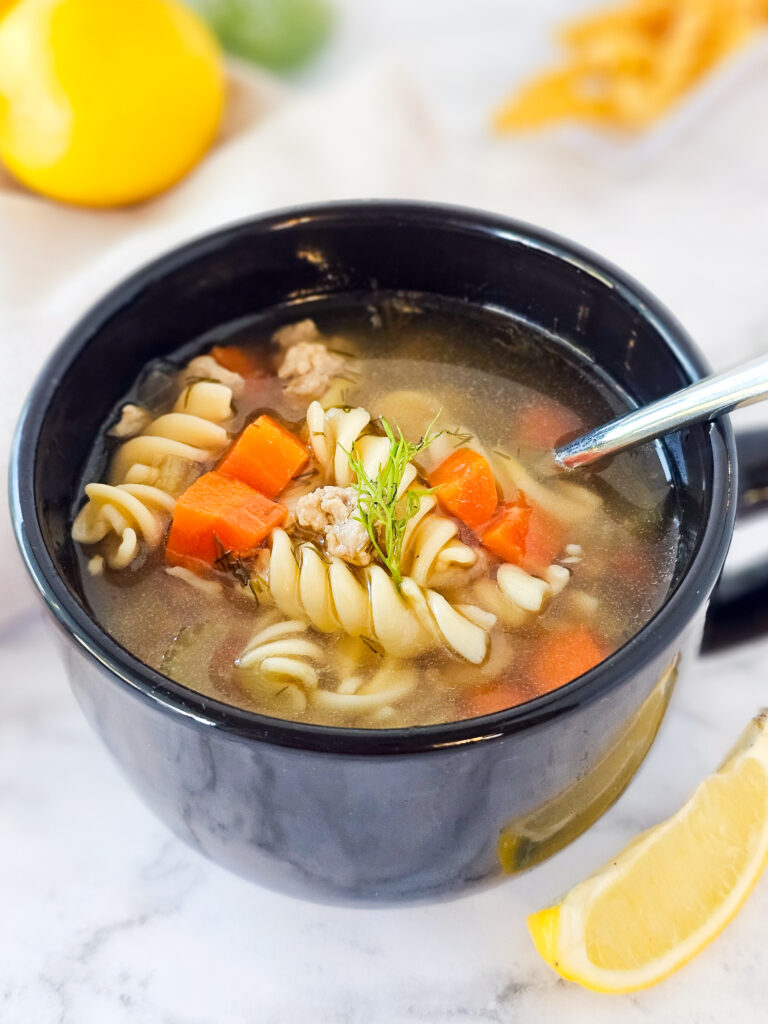This post may contain affiliate links.
Fiddlehead ferns are a sign of spring. People who like to forage go into the woods to pick these young ferns, which they then sell at local stores and farm stands. After the long winter, many of us are excited for some fresh, green food.
Fiddleheads come from certain ferns and are just the ferns’ new leaves rolled up tight. If no one picks them, they’ll grow into regular fern leaves. But when picked young, they’re a tasty green treat. They kind of taste like a mix of broccoli and asparagus, but not exactly like either.
Before picking fiddleheads, make sure you know which ones are safe to eat. Not all ferns are edible.
Fiddleheads might look a bit strange if you’ve never seen them before, but they’re easy to cook. Here’s a simple way to cook them that really shows off their taste.
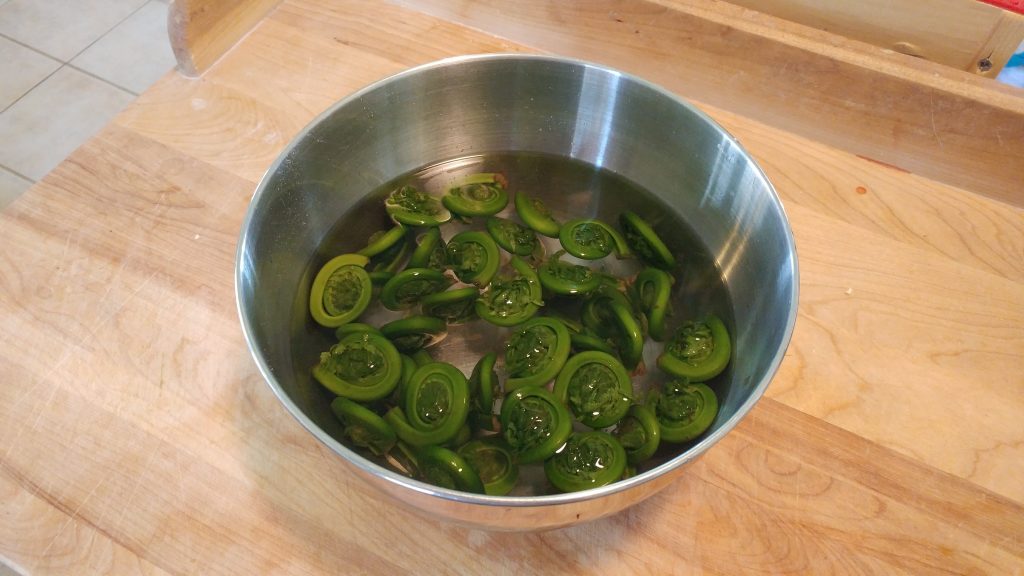
Step 1: Clean Fiddleheads
Those little tightly wrapped fronds can capture a lot of dirt and soil and also tend to release strands when they are cooked.
I take a two-step cleaning process before I start cooking them—first, I rinse them a few times through running water, then I soak them in a bowl of water for at least 10 minutes before rinsing again. You can also choose to cut off any browned or very long ends.
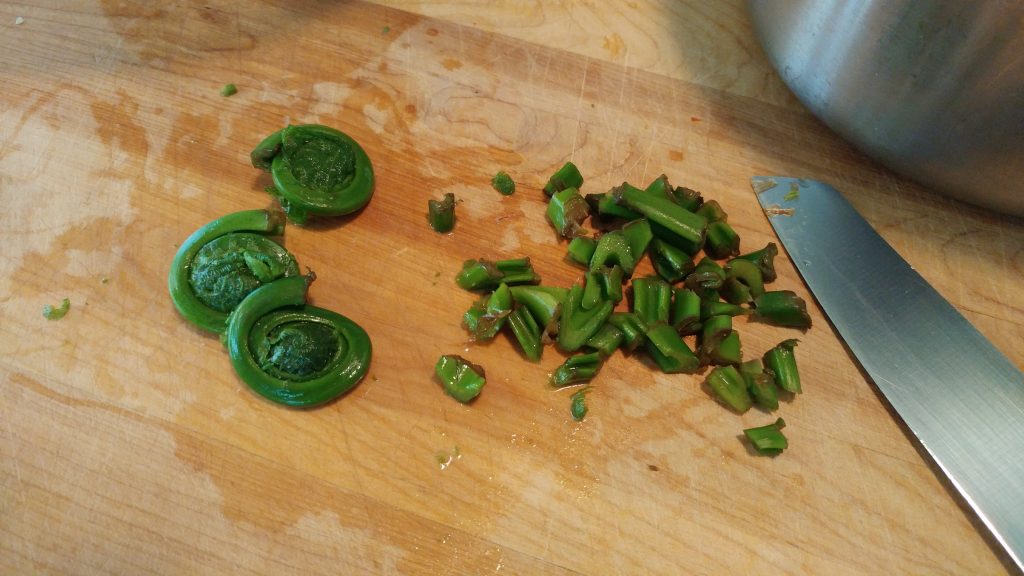
Step 2: Let it Simmer
Place the fiddleheads in a pot of water, bring to a boil, then reduce heat and simmer for about 5-7 minutes. This step not only softens the fiddleheads but also filters out a bunch more dirt (you literally get a pan full of brown water when you’re done), so it’s also one more step in the cleaning process.
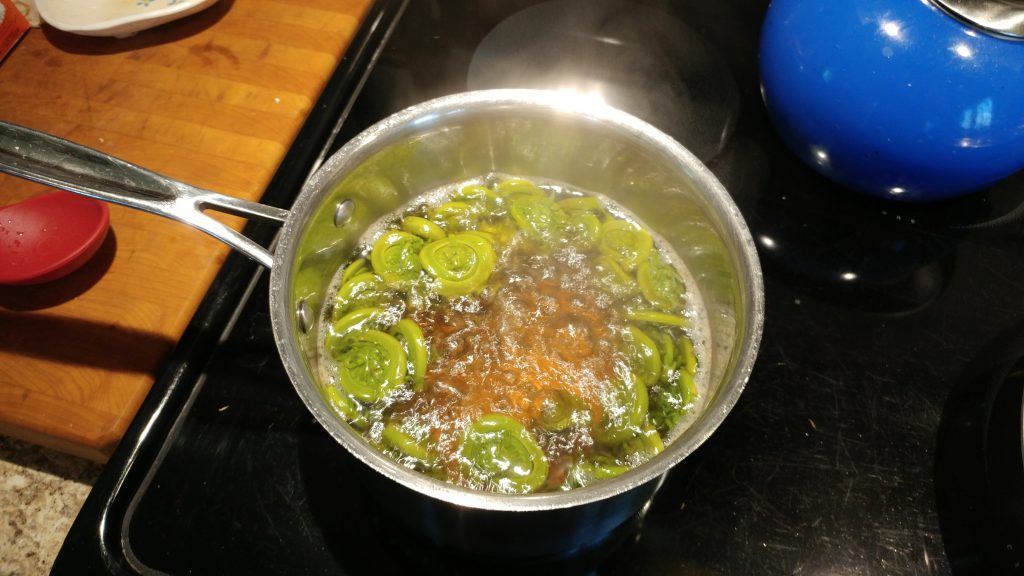
Step 3: Saute
Drain the fiddleheads or scoop them out of the water. Heat a slug of olive oil in a frying pan on medium-high heat. Add some onions, shallots, or garlic (or any combination of those) to the pan and cook until softened.
Add the shallots and cook for 5 more minutes until both the onions and the fiddleheads are soft and starting to brown (keep them al dente, though; you don’t want mushy fiddleheads).
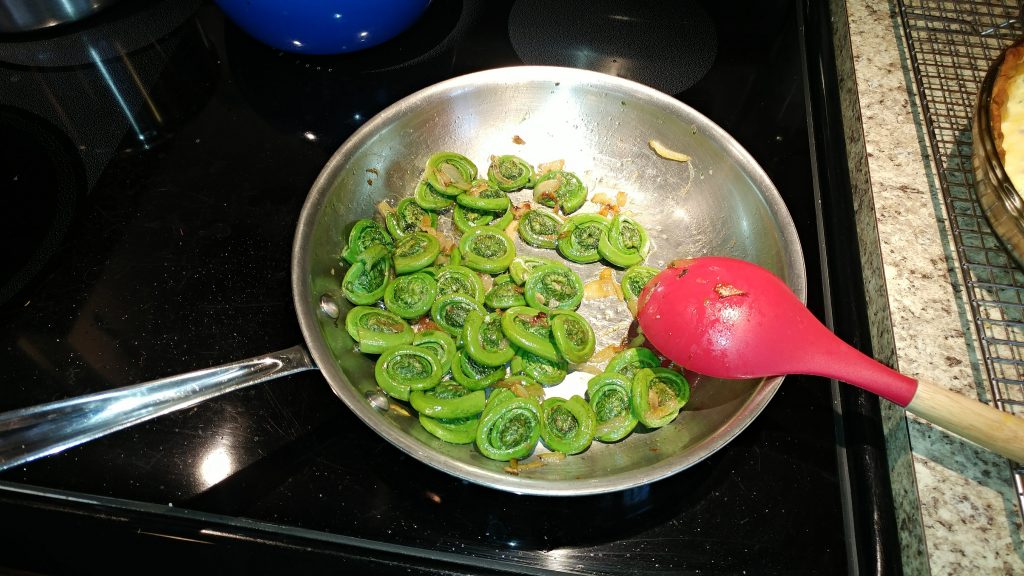
Voila – serve for dinner!
Other posts you might like
- How to Make Garlic Powder
- How to Dry Fresh Thyme – 5 Methods
- How to Make Italian Seasoning
- How to Dry Rosemary – 4 Easy Methods
- How to Make Seasoned Salt with Fresh Herbs
Carrie Williams Howe is an educational leader by day and an aspiring homesteader by night and weekend. She lives on a small homestead in Vermont with her husband, two children, and a rambunctious border collie. She blogs about her family's homestead life at The Happy Hive.

